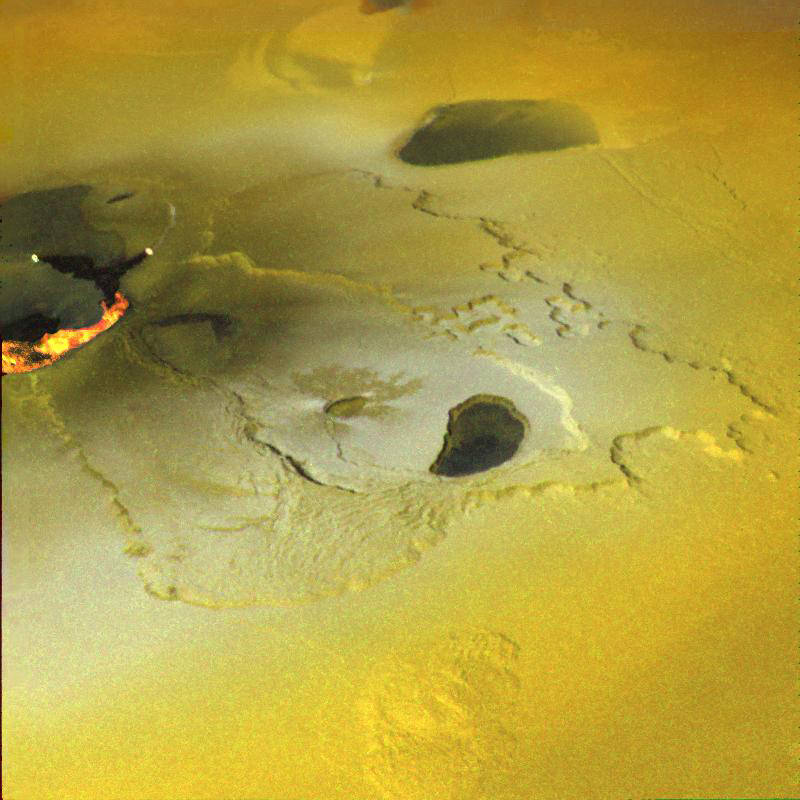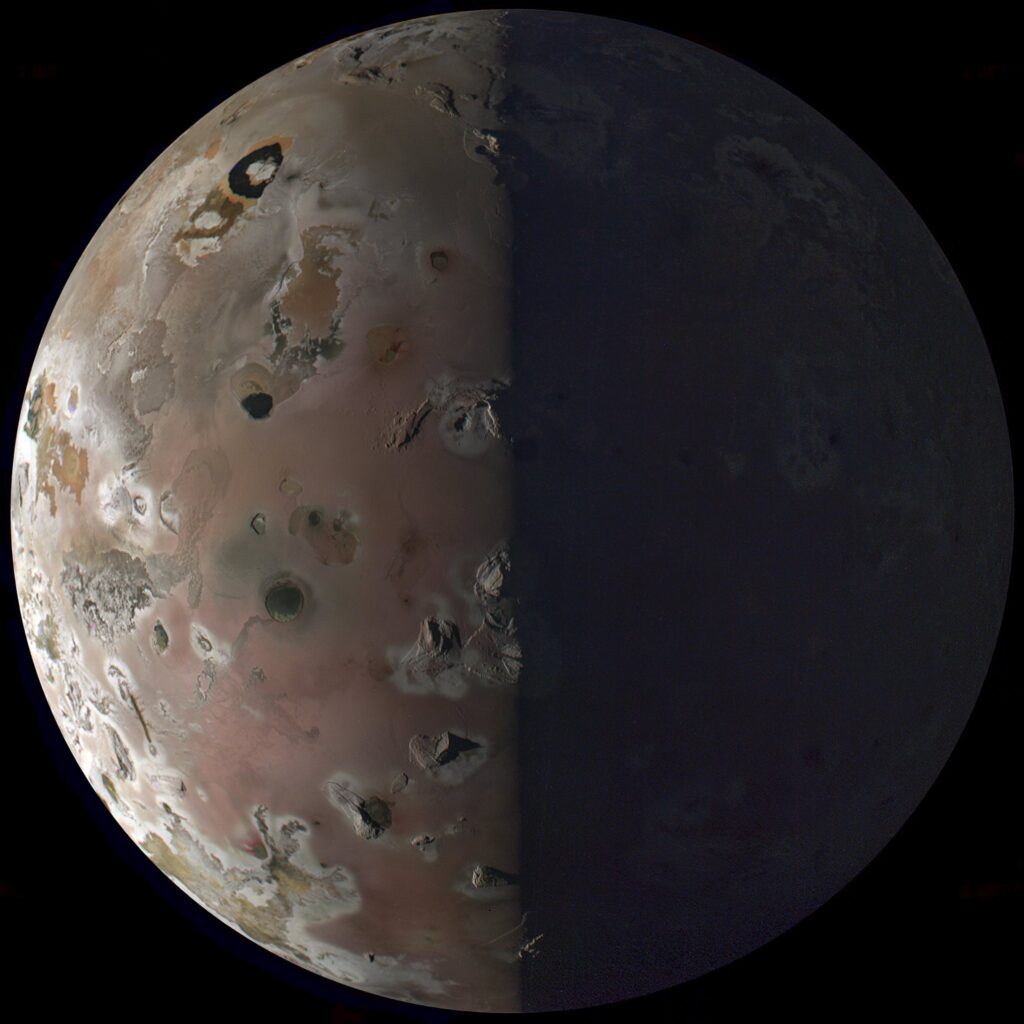On February 3, the Juno probe will make a close flyby of Io. The spacecraft will fly at a distance of only 1,500 km from the surface of Jupiter’s volcanic moon.
World of volcanoes and lava lakes
Io is the most geologically active world in the Solar System. It is home to hundreds of volcanoes, which eruptions continuously modify the landscape of the moon. Io’s surface is a mixture of plains covered with volcanic deposits, numerous mountains, plateaus and gorges through which flows of molten sulfur float. There are also permanent lava lakes on the moon. You can learn more about what this extremely exotic world is like from our article.

The main problem with the study of Io is associated with high levels of radiation. The moon’s orbit passes inside one of Jupiter’s radiation belts, which is why a close visit to it is a serious test for any spacecraft. Therefore, the more valuable the data that Juno will be able to collect during the upcoming flyby.
Visit to Io
It is worth saying that this is not Juno’s first visit to Io. The last time it visited the moon was at the very end of last year. The scientific program of the new flight will generally resemble the last one. Juno will take high-resolution images of the moon’s surface and collect data on the thermal signatures emitted by its volcanoes and calderas. The minimum approach distance to Io will be 1,500 km.

The probe will also take advantage of Io’s gravity to change its orbit. After the visit to the moon, the period of its orbit around Jupiter will decrease to 33 days.
In the future, Juno will make several more visits to Io, but each time the distance will increase. Starting in April 2024, the spacecraft will begin a series of experiments during which it explores the upper layers of Jupiter’s atmosphere. This will provide key information about the shape and internal structure of the planet. The Juno mission is designed to operate until the end of 2025. At the moment, it is unknown whether NASA will renew it again.
Follow us on Twitter to get the most interesting space news in time
https://twitter.com/ust_magazi


